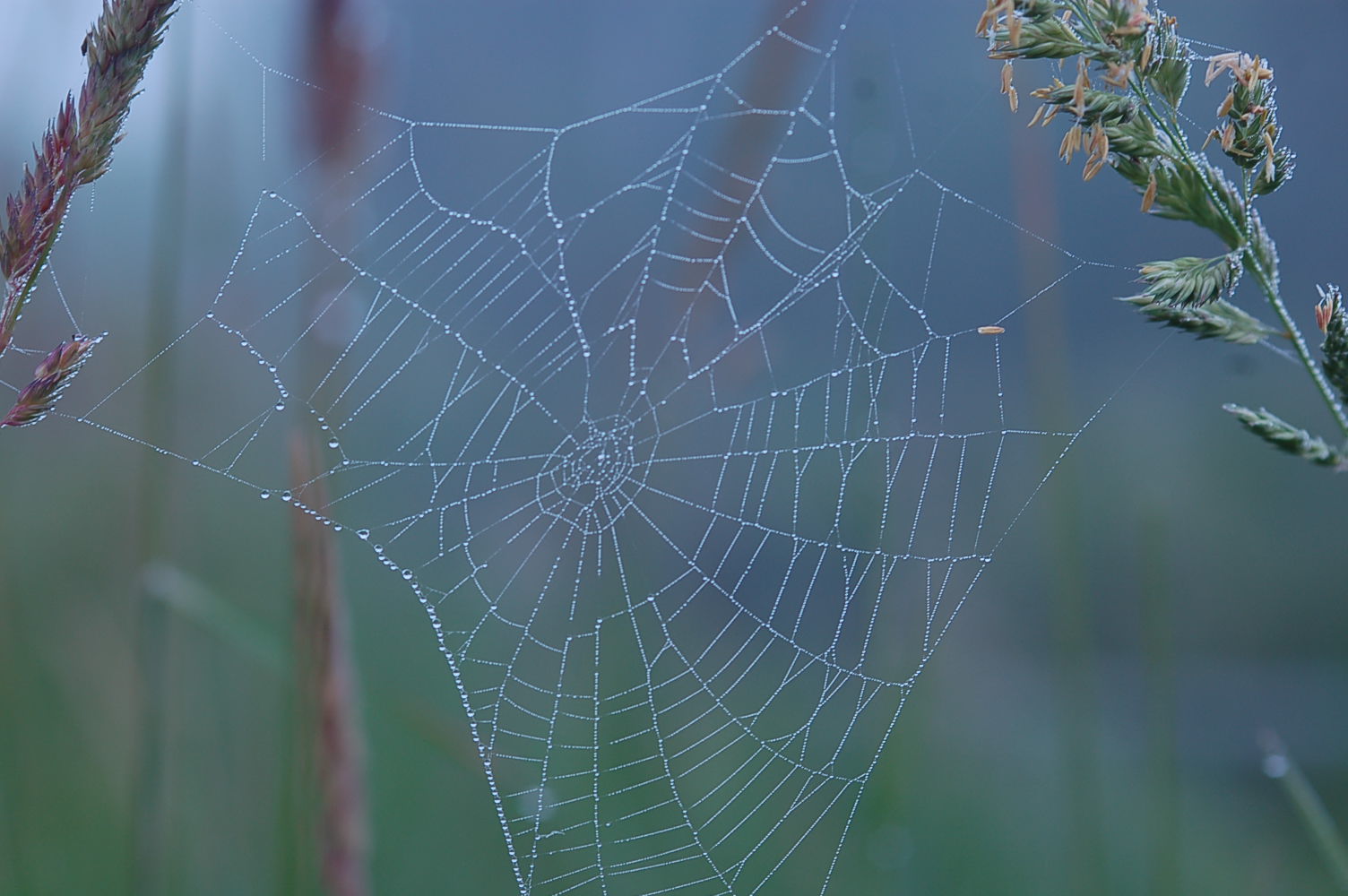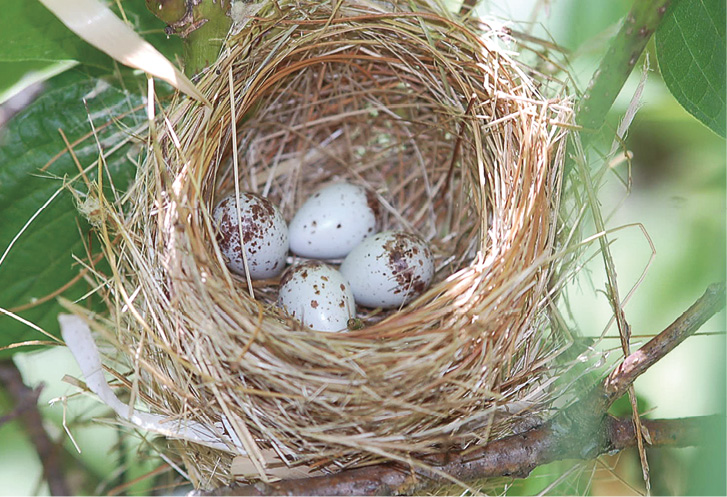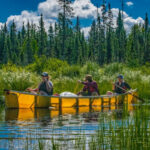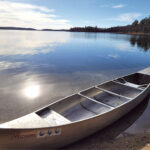June offers amazing opportunities to watch the North Shore summer unfold. It is a marvelous time of growth, amid long, warmer, often wet days, according to Larry Weber, author of Backyard Almanac. This makes for family-friendly fun, with adults and children alike delighting in small wonders of summertime biological phenomena. Children are especially fascinated with small worlds, according to David Sobel’s Childhood and Nature. Families can expand this idea to enhance adventures, searching for small natural things that bring joy.
Using senses to notice small wonders, such as flower blooms, can help families nurture a human-nature connection while they participate in phenology. Phenology studies cyclical events in the lives of animals and plants, offering valuable learning opportunities, according to the Minnesota Phenology Network. By paying close attention to seasonal changes, families can use phenology as their natural tour guide.
Co-president Sue Fuad of the Minnesota Master Naturalists North Shore Chapter recommends Sugarloaf Cove Nature Center in Schroeder as one unique stop where families can practice phenology. Families may enjoy Sugarloaf’s bird banding; focused on the nesting period, it offers a first-hand account of the appearance of brood patches—bald belly patches that develop on nesting mamas (and some dads), according to naturalist Dominique Menard. “Since the feathers on a bird are generally helping to insulate them, having this open space does the opposite and helps birds that are nesting to better transfer heat to eggs or young chicks,” she says. Check out Sugarloaf’s online calendar for details.
Bird watching is another way to observe small wonders, nurturing a sense of concern for Earth’s creatures and offering discoveries about their habitats and movements. Families can familiarize themselves with area species by learning fun facts from Sugarloaf’s Bird Watch book. Discover how and where ruby-throated hummingbirds and American goldfinches build their nests. A quick preview: cobwebs, moss, spider silk, thistle down, and other small trail materials are involved.
Egg laying frequently occurs in June (like for hummingbirds) and continues into July for some species (like goldfinches). Bird nest sites range from on the ground to high in trees, according to Weber. Some “owners of these nests sing territorial ownership proclamations for much of the day,” Weber says. These songs are a true treat for families indulging in the pleasure of a listening session. Closing your eyes will help you focus on the songs, and children can make toilet paper tube binoculars for viewing.
Beginning in June, families may experience signs of other egg laying activities. “…gray tree frogs call as they go to their place of origin to lay eggs in water. Nights are often filled with their calling,” says Weber. At this point, spring peeper frogs have already been calling, but will continue to amaze with an auditory performance. “I love just driving slowly along backroads (in late spring) with the windows rolled down in the early evenings to listen for spring peepers and other frogs. Going for hikes that take you near vernal pools, ponds, or small water bodies are also great ways to get out looking for frogs,” says Cook County Extension Educator/Community Center Director Sarah Waddle.

To enhance frog frolicking, families can listen to calls on the Amphibian and Reptile Survey of Minnesota’s website. Children usually love pretending to be frogs; think frog jumps!
Frogs call from vernal ponds into July, yielding tadpoles—frogs in their aquatic, larval phase. Families might spot these tadpoles in various stages. “On the rocky shores of Lake Superior, puddles are formed by spray and rain water. Such small water worlds are the abode of tadpoles of chorus frogs,” says Weber.
Exploring families can watch other baby animals too. One such animal quite skilled at jumping, like children and frogs, is the snowshoe hare. Children can pretend to be brave baby hares out discovering their new world.
Snowshoe hares differ from eastern cottontails, whose babies are born hairless, blind, and generally helpless, according to Menard. “A newborn hare is precocious: … born with … eyes open and fur, and will be able to hop around within a few hours of birth.” she says. Snowshoe hares have multiple summer litters, offering several chances to spot young hares, according to Menard.
Noticing beautiful things like fluttering butterfly wings can also evoke a wonder-filled experience. Consider asking children what beautiful things they notice along a hike. Find butterflies along sunny trails and habitat transitions, on non-windy days above 55 degrees F. In June, our largest butterflies (monarchs and Canadian tiger swallowtails) appear, according to Weber.
Also in June, “insect predators, the dragonflies, emerge from aquatic lives and take to the air,” Weber says. Menard has witnessed dragonfly nymphs climb from water onto reeds or grasses, shed their skin, and become adults. “The wings are so iridescent when they first emerge it’s incredible,” she says.
Crab spiders wait for insect prey in June’s open flowers, and families can find first appearances of circular orb webs, according to Weber. As July webs increase, get out early for delightfully dewy spiderweb viewing.
Some shade-tolerant forest flowers are left for June sightseeing, like Virginia bluebells (important early pollinator food). Fields are brushed with purple and pink lupines and yellow buttercups, according to Weber. “On the Lake Superior rocky shores, a couple of unusual flowers bloom: bird’s-eye primrose and butterwort,” he says. These are arctic relicts, according to Fuad.
July roadside fireweed and milkweed burst in pink, purple, and orange. August goldenrod is ablaze in gold, providing monarchs late season food after they transform from caterpillars dining on milkweed hosts.
Viewing flowers through magnifying glasses is an enchanting exercise, but please leave flowers growing in their habitats for others to enjoy.
These are just some of the many small wonders that await families open to exploring North Shore phenology this summer.




